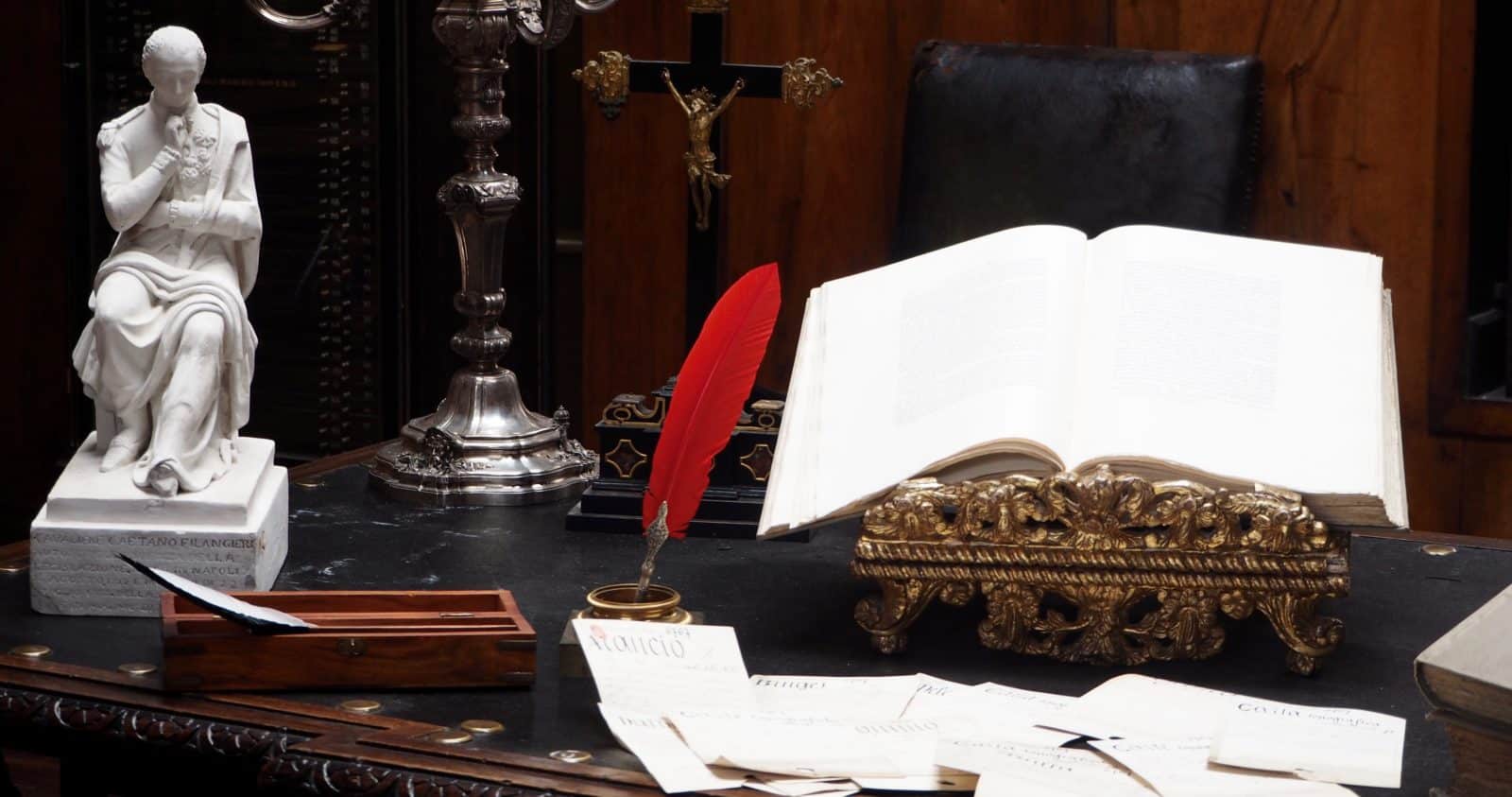WELCOME TO THE PALAZZO D'ARTE FILANGIERI
A PRINCELY MUSEUMThe aim is to show: “…the works that represent memories of our lustrum and they are very important for our history and art…”
G. Filangieri
Carlo Filangieri Room
His son, the Prince Gaetano Filangieri decided to devote to his father Carlo the first room of the museum. It was organized in order to create harmony between XV style of Como Palace and the best exhibition of many works (artistic handicrafts, weapons, paintings etc etc..).
Carlo Filangieri’s room is divided in three parts through great vaults realized by gold mosaic style by Fabbrica Salviata of Venice. It has many narrative functionalities: Renaissance architecture, innovative twentieth century art, the sculptures, the weapons, the dresses and Oriental pottery that describes different cultures.
The focal point of the entire room is represented by the niche in which is situated the bust of Carlo Filangieri made by Tito Angelini.

Agata Room
For the realization of the floor, the Prince designated Industrial Artistic Museum of Naples entrusting the artistic direction to Filippo Palizzi and the technical direction to Giovanni Tesorone.
The scattered light of the space is provided by a skylight in iron and glass commissioned to Society of metal construction Cottrau in 1888.
In the art gallery there are many paintings, from XVII to XIX century, by many European artists as Heckart, Fuger, Luca Giordano, Solimena, Andrea Vaccaro and Jusepe de Ribera.
A passage roof is a space that expands the exhibition and allows to see the library.
In questo secondo livello, le vetrine contengono una raffinata collezione di porcellane e biscuit, la loro provenienza è varia, da Meissen alla Real Fabbrica di Capodimonte.
On the second floor there are many shop windows with pottery from different countries, from Meissen to Real Capodimonte Industry.
Some works of art from Agata Room
The Library
The Study of the Prince

On the bookshelves there are many artistic, industrial and drawing books and magazines bought by Filangieri.
The library has also a great collection of coins and medals in the large closets with the inventory.
In this collection there are some important texts of Eugène Viollet Le Duc, Claude Sauvageot, Albert Jacquemart, Giuseppe Corona, G. Campori, A. Venturi, G. Morelli, G.B. Cavalcaselle and G. Milanesi.
OPENING TIME
Monday to Saturday from 09:30 to 19:00 (last visit 18:30)
Sunday from 09:30 to 19:00 (last visit 18:30)

